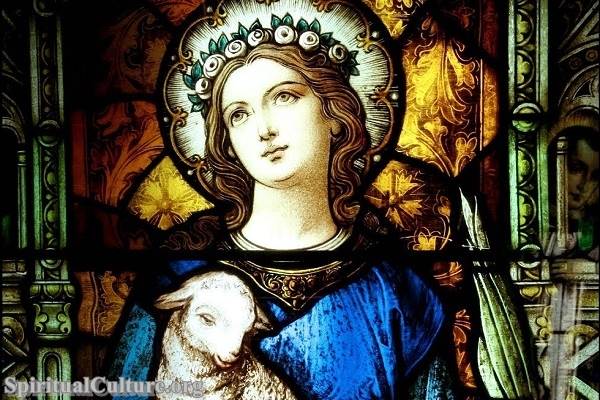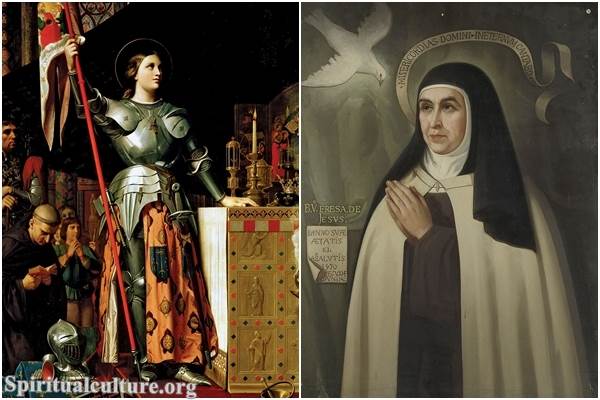Saint Agnes, or St. Agnes, as she is commonly known, is a revered figure in Catholicism. Her story is one of unwavering faith, pure innocence, and ultimate sacrifice, making her an enduring symbol of virtue and devotion for Catholics worldwide. Her name, derived from the Latin word ‘Agnus,’ means ‘lamb,’ signifying her purity and innocence.
Saint Agnes: The Martyr of Rome
Saint Agnes was born in Rome in 291 AD and is known for her martyrdom at the tender age of 12 or 13. Coming from a wealthy Christian family, she was highly sought after for marriage. However, Agnes, deeply committed to her faith, made a vow of virginity to God. She rejected all her suitors, which led one of them, the son of a high-ranking official, to report her to the authorities for being a Christian.

St. Agnes
During Emperor Diocletian’s reign, Christians were persecuted ruthlessly. Agnes was brought before the Roman governor and given a chance to renounce her faith. However, she chose to stay true to her beliefs, which led to her execution. Her courage and steadfast faith in the face of such adversity have made her a symbol of purity and devotion in Catholicism.
Saint Agnes in Catholicism
Saint Agnes holds a significant place in the Catholic Church. She is one of the seven women, besides the Virgin Mary, who is commemorated by name in the Canon of the Mass. The Church honors her on January 21st, her feast day, with special services and prayers.
She is considered the patron saint of young girls, chastity, rape survivors, and the Children of Mary. Many Catholic girls choose to adopt her name during their Confirmation, a sacrament where they confirm their faith and commitment to the Church.
Catholics often invoke her intercession in prayers and novenas, seeking her assistance in maintaining purity and faith. Many Catholic churches and schools worldwide are named after her, underlining her enduring influence in the Catholic faith.
Saint Agnes and the Lamb Symbolism in Catholic Iconography
In Catholic iconography, Saint Agnes is often depicted with a lamb, symbolizing her virginity and innocence. The lamb also refers to Jesus Christ, the Lamb of God, signifying Agnes’s profound relationship with Christ.
Lamb symbolism is deeply intertwined with Saint Agnes’s feast day. Two lambs are traditionally blessed at the Church of Saint Agnes in Rome on her feast day. Their wool is later used to weave the palliums, the vestments worn by archbishops and the Pope, symbolizing their unity with the Church.
Saint Agnes: A Testament to the Strength of Faith
The story of Saint Agnes is a testament to the strength of faith. Her unwavering devotion to God inspires Catholics even in the face of death. Her life reminds us of the power of faith and the sacrifices one can make in the name of religion.
Saint Agnes’s story stands as a beacon of unwavering belief and commitment in an age where faith is often questioned. She embodies the essence of Catholicism—faith, sacrifice, and devotion. Her legacy inspires and guides Catholics worldwide, making her an enduring symbol of virtue and purity in the Catholic faith.



